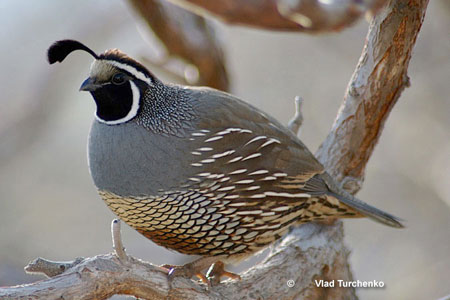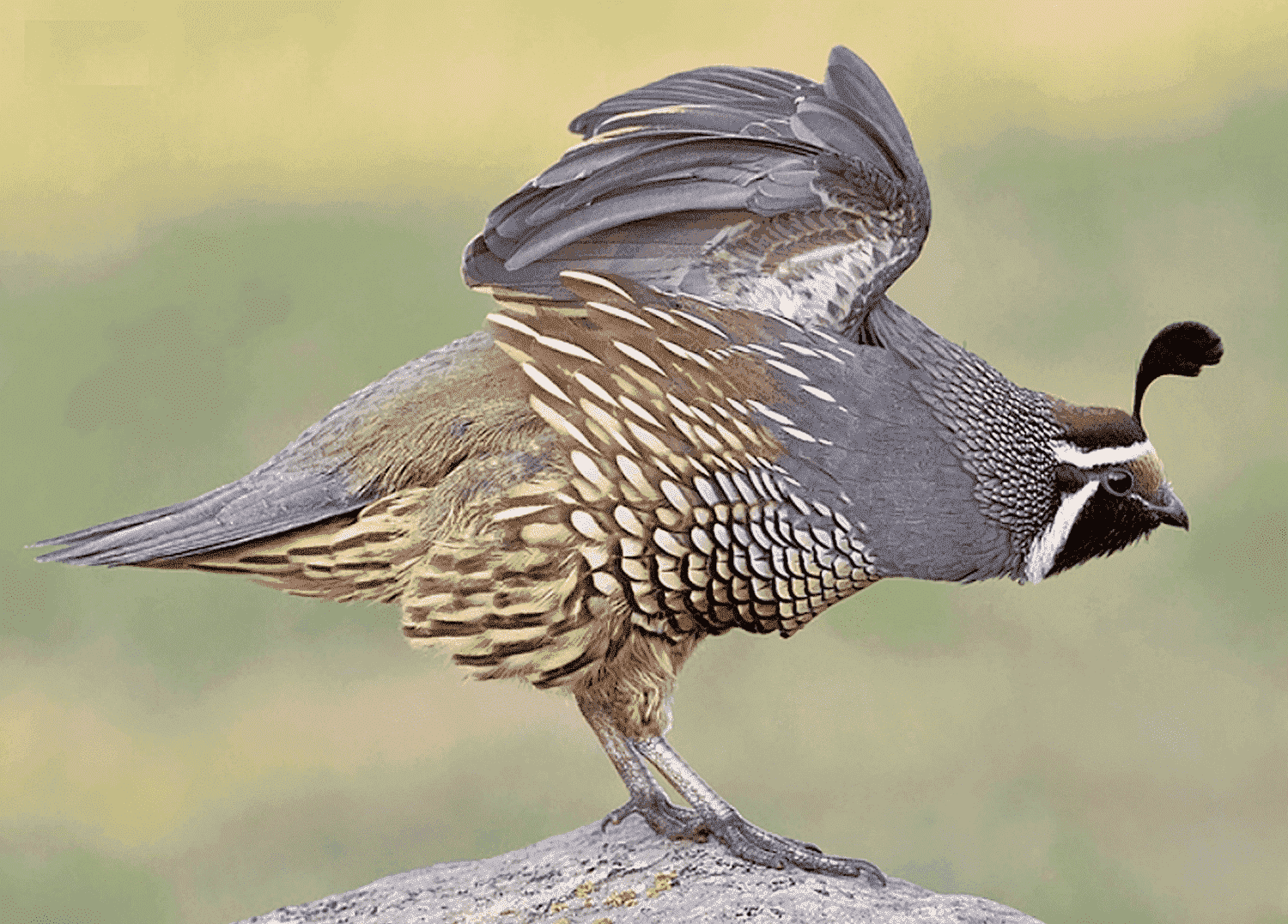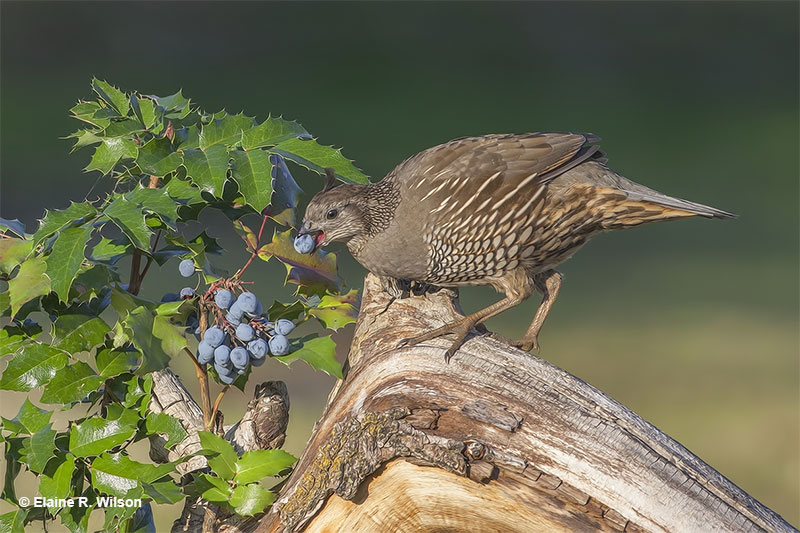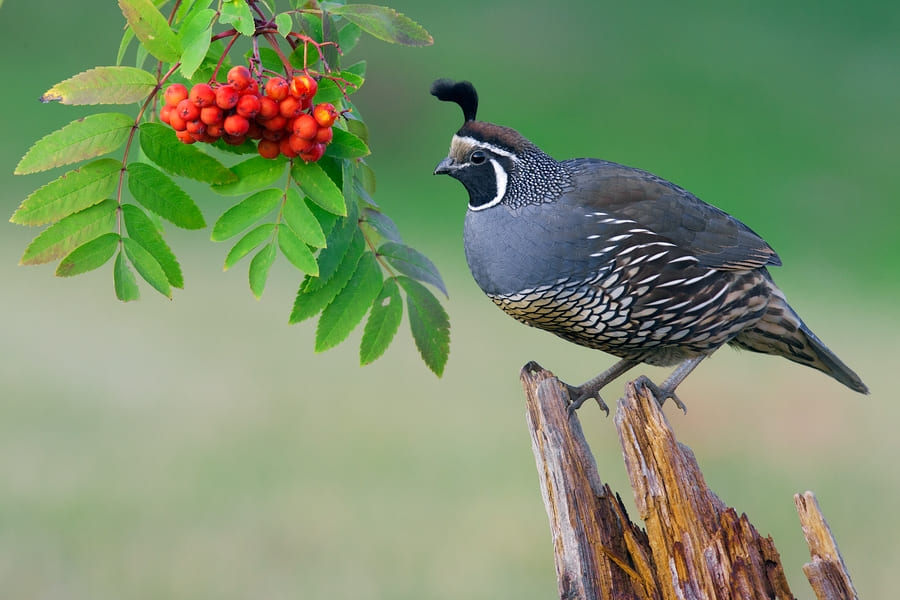
California has a huge bird list of 680 plus species. One of those bird species is the official California state bird, the California Quail, a lovely, animated bird with a comical appearance.
California is on the western coast of the USA, is the third largest state, and has an area of 163,696 square miles. Stretching 900 miles from north to south, the Golden State has the most residents; more than 39 million people.
The California Quail is a small, blue-gray and brown quail with a prominent, semi-curved feather growing out of the front of its head, and a scaled pattern on the belly.
On this page
History
The California Quail became the official state bird of California on June 12, 1931. The state legislature voted to name this bird species as their official state bird because the California Quail has its center of abundance in this state and is a common bird in many areas, especially valleys near the coast and coastal habitats where lots of people live.
It was and is a familiar bird to most Californians, and the bird was also chosen because it played an important role in many Native American California cultures. For thousands of years, people living in California made use of the California Quail for food, and as inspiration for art and other purposes.

Photograph © Alan Wilson.
In many parts of the state, as long as there is enough grassy and scrubby habitat available, California Quails occur and can be seen scurrying around, visiting feeders, and loudly calling from tall rocks and other perches.
California Quails are very social birds that move together in groups of 20 to 25 individuals.
Since they commonly lend a unique and happy touch to natural areas in the state but few other places, this bird species was a main candidate and easy choice for being the official state bird.
Facts about The California State Bird
- The California Quail has been featured in more than one film, including a covey in “Bambi” as Mrs. Quail.
- California Quail chicks have to peck at the feces of adult birds to acquire important bacteria needed to digest the vegetable food items they feed on.
- Male and female California Quails call together by alternating their call notes to create a coordinated duet.
- The funny head plume of the California Quail’s is actually not a single feather but a grouping of six feathers that overlap with each other.
- In common with many other bird species of arid, hot environments, California Quails get much of their water from eating insects and vegetation. Even so, they still need to drink water during very hot weather.
Identification
The California Quail (Callipepla californica), also known as the California Valley Quail is a small, gray and brown quail with a prominent, semi-curved feather on the top of its head, growing out of the front of its head. The male has a chestnut-colored crown bordered with black, a white eyebrow, buff front, and black throat and throat bordered by a white stripe.
The blackish nape and neck have white scaling, there is some black scaling on the back, white marks on the flanks, and bold black and white scaling on a buff-colored belly. It is around the same size as a small chicken, and males are slightly bigger than females.

Female California Quail. Photograph © Elaine R. Wilson
The female state bird of California is shaped like the male but they have a shorter tuft on the top of their head. Females are duller, golden brown in color.
Instead of the bold chestnut, and black and white pattern on the head and face of the male, the female quail has a mottled gray face and throat. However, she still shows a bold, scaled pattern on the neck and underparts.
Both male and female birds also have medium to long gray tails, and strong, grayish legs and feet to help them scratch on the ground for food items and to run from predators quickly. They also both vocalize, mated pairs doing so together.
Both sexes prefer to run on the ground but will burst into occasional flight on rapidly beating wings.
Call
California Quails have several different calls, but the three-noted chi-CA-go vocalization is best known. This call is given by a lone bird that needs to locate the rest of its covey and is often called the “assembly” call.
These beautiful little quail also give a variety of pipping calls that probably help them stay in touch with each other in dense vegetation, and the male shouts out a single squill! or kwah! call note from a perch, throwing his head back when he gives it.
The loud calls of the California Quail are pretty easy to learn and recognize. They sound a lot like calls given by the closely related Gambel’s Quail, but that species usually has an assembly “song” of four notes, and replaces the California Quail in desert habitats.
What do they eat?
The state bird of California is largely depending on vegetation. They eat seeds, leaves, grains, flowers, berries, and even acorns. They also eat insects such as caterpillars, stails, mites, beetles, and even snails.
Behavior
California Quails are social birds that move together in social groups of 20 to 25 individuals, especially during winter months. Although they can quarrel over food, they still stick together at all times. This small ground-dwelling bird is known for its adaptability.
They can hide quite well in brushy habitats but will come to feeders. However, since they are hunted in some areas, this game bird can be shy around people, especially if someone is talking loudly or making sudden movements.

California Quail (Male), Bella Vista Road, Vernon, British Columbia
Raptors are the main predators of the California Quail, especially Cooper’s Hawks. However, if the opportunity presents itself, birds like Red-tailed Hawks and Northern Harriers will also prey on quail. Ground-squirrels, ravens, and snakes can also attack eggs and young birds.
When California Quails notice a predator, they quickly run to cover or flush and rapidly fly to a dense tree.
More in California: Most common birds | Hawks | Owls | Ducks
Frequently Asked Questions
What is the state bird of California?
The state bird of California is the California Quail.
Why is the California Quail the state bird of California?
The California Quail is the state bird of California because it is a native bird species that is widely recognized and cherished in the state. Its distinctive appearance, with its unique plumage and crested head, as well as its pleasant calls, make it a popular and representative symbol of California’s diverse wildlife.
When did California choose its state bird?
California designated the California Quail as its state bird in 1931.
What other states have the California Quail as their state bird?
The California Quail is not the state bird of any other states. It is uniquely recognized as the state bird of California.

